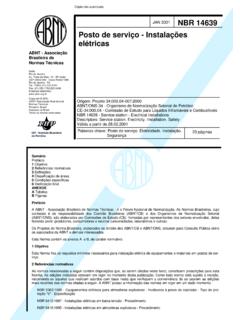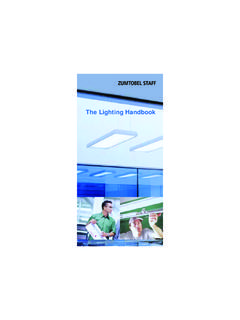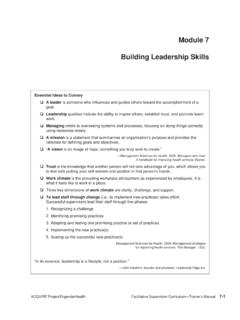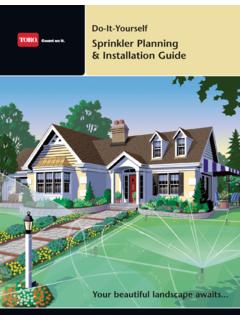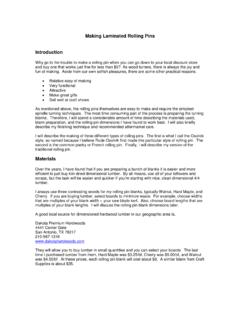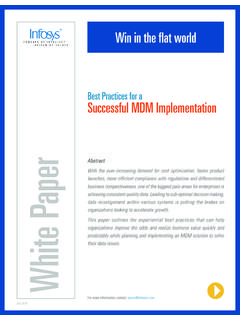Transcription of Fall Quarter 2005 - Unicamp
1 Fall Quarter 2005 Department of Design, Housing and Apparel College of Human Ecology 240 McNeal Hall, 1985 Buford Avenue St. Paul, Minnesota 55108-6136 (directions and maps) Phone (612) 624-9700 INTRODUCTION <ARCHITECTURAL DRAFTING> TYPES OF DRAFTING Technical sketch Mechanical drafting Computer drafting DRAFTING MEDIA DRAFTING SHEET SIZES LINES WIEGHTS Lines and Line Quality Line weights for letting <DRAFTING STANDARDS AND SYMBOLS> LINE TYPES MATERIAL SYMBOLS ARCHITECTURAL GRAPHIC SYMBOLS DRAWING SYMBOLS FOR CROSS-REFERENCE <TYPES OF PLANS> TYPICAL SCALES FOR DRAWINGS FLOOR PLANS INTERIOR ELEVATION DRAWINGS SECTION DRAWINGS INTERIOR DETAIL DRAWINGS SCHEDULES Door Schedule Window Schedule Interior Finish Schedule Furniture Schedule
2 Drawing is considered to be a universal language. Drafting is a technical drawing used by designers to graphically present ideas and represent objects necessary for a designed environment. A set of these drafted illustrations is called a construction document (CD). There are common rules and standards to ensure that all designers are able to understand what is in the drawing. These design drawings use a graphic language to communicate each and every piece of information necessary to convey an idea and ultimately create a design. The following section of this handbook will help guide you through the common drafting standards that will be used in the Interior Design program at the University of Minnesota.
3 Architectural drafting is basically pictorial images of buildings, interiors, details, or other items that need to be built. These are different from other types of drawings as they are drawn to scale, include accurate measurements and detailed information, and other information necessary to build a structure. These documents are graphic representations to communicate how to do the construction, remodeling, or installation of a design project. These include drawings for floor plans, elevations, sections, details, ceiling plans, finish schedules, and mechanical information such as electrical, plumbing, air conditioning, and heating plans.
4 TYPES OF DRAFTING There are three categories of drawings in interior design: process drawings (preliminary images, sketches, schematics, etc.), construction documents (drafted drawings, working drawings, plans, elevations, sections, details, etc.), and presentation drawings (illustrated sketches and three-dimensional views including perspectives, obliques, isometrics, etc.). The main focus of this section is the drafted drawing of which there are also three different types: technical sketch, mechanical drafting, and CAD (computer-aided drafting). These all fall under the heading of architectural drafting as they each convey building detail in scale and use of a common graphic language.
5 Technical Sketch Like an artist may use sketches to develop ideas for a painting or sculpture, technical sketches are used during the development of ideas for initial or preliminary plans. The ability to make quick and accurate sketches is a valuable advantage that helps you convey design ideas to others. A sketch may be of an object, an idea of something you are thinking about, or a combination of both. Most of us think of a sketch as a freehand drawing, which is not always the case. You may sketch on graph paper to take advantage of the lined squares, or you may sketch on plain paper with or without the help of drawing instruments.
6 Technical sketches are drawn without mechanical aid, like a t-square, compass, or straight edge, but, like other forms of architectural drafting, are drawn to scale and contain a variety of line weights and line styles (Figure 1). The pencil or pen is guided by the hand of the drafter alone and this is usually done on trace paper over a 1/4" grid paper. The grid paper becomes the guide helping to keep lines straight. A technical sketch gives an idea that the design is still being developed while a mechanically drafted or CAD drawing implies an advanced state of planning and gives the impression the design has been finalized.
7 Figure 1. Examples of technical sketch showing ideas and scale of design Mechanical Drafting Mechanical drafting is a refined style of drawing in which the pencil or pen is guided by devices such as t-squares, parallel rules, straightedges, compasses, triangles, and French curves (Figure 2). These drawings are developed only after the conceptual phase of a project has been completed and the design is finalized. However, it is typical to see revisions of construction documents as well as client needs change or other issues arise. The typical set of construction documents consists of mechanical drafted illustrations that include interior and exterior elevations, plans, sections, details and other drawings needed to complete or build a project.
8 These are used within the professions of interior design, architecture, engineering, and other building trade industries and show construction needs, architectural features, structural elements, electrical and mechanical systems, detail drawings related to structures, and furnishings. Computer Drafting When drafted documents are prepared on a computer, they are referred to as computer-aided drafting (CAD). An advantage of CAD is the speed of revisions to a document. Instead of redrafting an entire page alterations can be made quickly and easily and the page reprinted or plotted.
9 CAD drawings can also be easily stored electronically and shipped to other designers who can make revisions or alterations. Some design and drafting work can be completed more quickly on CAD, however, you will still need to use technical or mechanical drafting for design development. Figure 2. Example of CAD drafting DRAFTING MEDIA The papers and films used to draw on are drafting media. While sketching may be done on any size piece of paper or on a variety of types of paper, all forms of architectural drafting, from technical sketching to mechanical drafting, are done on standard sizes and types of paper.
10 There are two main types of paper, tracing and vellum, and there are drafting films such as Mylar and acetate. Tracing paper and drafting vellum are the two most widely used types of drafting media. TRACING PAPER (also called TRACE) is a medium-grade white (or slightly yellow tinted) transparent paper that takes pencil, ink and marker well. Trace is typically used for sketching and developing ideas, developing initial and preliminary layouts and developing space planning. It is an inexpensive paper and, since it is transparent, a new sheet can be placed over a preliminary drawing to refine it.
